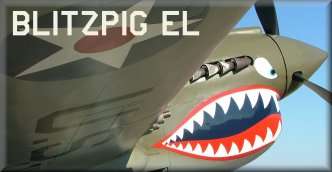
 |
|
#1
|
|||
|
|||
|
I was using UP 2.0.1 with 4.9. Then after all the servers went to 4.10.1 I got tired of waiting for UP 3.0 and installed HSFX 5.0 mostly to get 6DOF again. HSXF 5.0 seems to have everything I need. Can someone explain the defferences or advantages of one over the other?
|
|
#2
|
|||
|
|||
|
Best thing to do mate is to do to the ultrapack website and look at the read-me then decide for yourself..on top of that if youve got the SAS mod activator you can have both installs in one place just select what version you want to play and viola!
hth |
|
#3
|
|||
|
|||
|
Neither readme compares one to the other. One thing I have seen in UP 3 that I think is really nice is the start menu, but I'm not sure how useful it would be to me as I rarely change setings. I am really interested in what others have to say.
|
|
#4
|
|||
|
|||
|
I wish UP and HSFX could get together and make a baby
|
|
#5
|
|||
|
|||
|
I have two installs... the two are not compatible.. and may never be if I am reading between the lines on the SAS/UP forums.. I will always go with what ever mod pack works with the latest official patch.. For me UP ids ok.. it has it's plusses for sure.. but I want to stick with whatever the latest patch is and if UP brances off after 4.10.1 and decides to not go with 4.11 then I will be using UP strictly to keep up with what the other world is doing.. There is some goodness there.. in 3.0.. I like it but the squad is sticking with HSFX..
|
|
#6
|
|||
|
|||
|
HSFX 5.0 is oriented to SEOW !
http://wiki-seow-en.swil.fr/index.php/Main_Page And have Aachens Flight Models - JGSME MOD Quote:
Last edited by Mustang; 05-28-2011 at 06:57 AM. |
|
#7
|
||||
|
||||
|
Quote:
Not only is UP 3.0 not compatible with HSFX 5.0 UP 3.0 is not compatible with IL-2 4.10.1! That is to say you can not join a stock IL-2 4.10.1 server (coop or DF) with UP 3.0 enabled.. EVEN IF THE SERVER SAYS IT ALLOWS MODS! Which leads to my comment on the ORANGE text.. UP 3.0 has already branched off, that is to say you don't have to wait an see what UP 3.0 decides to do when 4.11 comes out, UP 3.0, as noted above, is not compatible with 4.10.1. And they have already stated they have no intentions of being compatible with any future official 1C/TD updates. Therefore if you want to use mods, say the 6DOF mod and join a IL-2 4.10.1 server your only choice is to use HSFX 5.0, in that UP 3.0 will not be able to join a 4.10.1 server. The only servers you can join with UP 3.0 is UP 3.0 servers. And you may want to keep this info under your hat.. Especially if you have an account at the UP and or SAS forums! Because I brought this all up a few weeks ago at the AAS forums, and it upset the leaders of UP and SAS so much that they felt the need to rename my handle and changed my aviator to something very childish, heck the leaders at SAS was so upset that they even IP banned me from their server. Which really shows you want kind of mind set your dealing with at those two sites. Where if you post any info about UP or SAS that they perceived to be negative and you stand the chance of them getting so upset at you that they will change your forum handle, avaitor and/or banning you for something you said in 'ANOTHER' forum! So keep that in mind if you choose to repeat what I pointed out here. Last edited by ACE-OF-ACES; 05-28-2011 at 07:06 PM. |
|
#8
|
||||
|
||||
|
Cheesehawk, did you miss where ACE-OF-ACES said 1C/TD updates?
Team Diadalos is in fact the official Maddox Games sanctioned producer of content for IL2 1946. Just sayin'. I'm also kind of wondering where SAS got that AC 47 Spooky gunship from? *COUGH*
__________________
 Personally speaking, the P-40 could contend on an equal footing with all the types of Messerschmitts, almost to the end of 1943. ~Nikolay Gerasimovitch Golodnikov |
|
#9
|
|||
|
|||
|
I've been running HSFX 5.0 on Skys of Valor for several weeks. SoV is a 4.10.01 server. No problem.
|
|
#10
|
||||
|
||||
|
Quote:
Quote:
Quote:
On just about any given day, most of the servers are standard/stock 4.10.1 servers When I say most, I mean most popular servers, and by most popular I mean with at least 5 or more people in them. In that I have not bothered to count all the servers than are up 24/7 but have no one in them. Quote:
And to show you, try an join any standard/stock 4.10.1 server with HSFX 5.0 and you will be able to join the server Unless The server sets the CRT value to 2, in which case the server typically states NO MODS allowed, and last time I check there are only a couple of servers that do that. |
 |
|
|